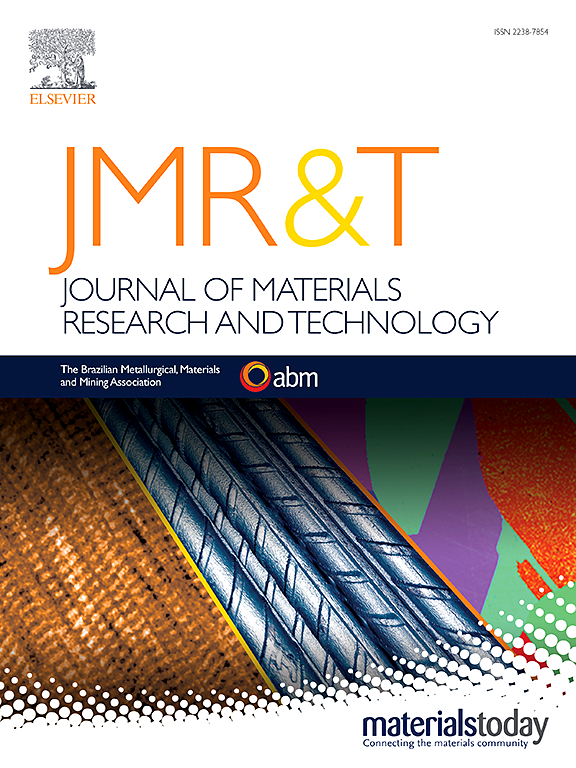激光成形修复17-4 PH/316L异种不锈钢的界面演变及力学性能
IF 6.2
2区 材料科学
Q1 MATERIALS SCIENCE, MULTIDISCIPLINARY
Journal of Materials Research and Technology-Jmr&t
Pub Date : 2025-06-10
DOI:10.1016/j.jmrt.2025.06.074
引用次数: 0
摘要
激光成形修复技术在工业领域得到了广泛的应用。然而,利用激光修复技术对异种材料界面演化的研究还很有限。本研究采用激光固体成形技术将17-4 PH马氏体不锈钢沉积在316L奥氏体不锈钢基体上。分析了热影响区(HAZ)和成分稀释区作为修复界面的关键区域。研究了激光功率对界面区相成分和元素宏观偏析的影响,并通过剪切实验评价了界面的结合强度。实验结果表明,快速凝固和衬底稀释导致不同界面区域的形成:未混合区(UMZ)、可见条纹区(VSZ)和成分混合区(CMZ),界面外延晶粒生长。随着激光功率的增加,剪切应力先上升后下降。这种行为归因于熔池对流,在最佳激光功率下,这增强了稀释并改善了界面结合。这些发现为异种不锈钢的激光修复提供了有价值的见解,为优化修复参数以提高界面性能提供了指导。本文章由计算机程序翻译,如有差异,请以英文原文为准。
Interface evolution and mechanical properties of 17-4 PH/316L dissimilar stainless steel by laser forming repairing
Laser forming repairing technology has been widely used in the industrial field. However, there are limited studies on the interface evolution in dissimilar materials by laser repair technology. This study uses laser solid forming technology to deposit 17-4 PH martensitic stainless steel onto a 316L austenitic stainless steel substrate. The heat-affected zone (HAZ) and the compositionally diluted region were analyzed as key repair interface areas. The effects of laser power on phase components and elemental macro-segregation in the interface region were investigated, and interfacial bond strength was evaluated through a shear experiment. The experimental results reveal that rapid solidification and substrate dilution lead to the formation of distinct interface regions: the unmixed zone (UMZ), visible streak zone (VSZ), and composition mixed zone (CMZ), with epitaxial grain growth at the interface. As laser power increases, shear stress initially rises before declining. This behavior is attributed to melt pool convection, at optimal laser power, which enhances dilution and improves interfacial bonding. These findings provide valuable insights into the laser repair of dissimilar stainless steels, offering guidance for optimizing repair parameters to enhance interface performance.
求助全文
通过发布文献求助,成功后即可免费获取论文全文。
去求助
来源期刊

Journal of Materials Research and Technology-Jmr&t
Materials Science-Metals and Alloys
CiteScore
8.80
自引率
9.40%
发文量
1877
审稿时长
35 days
期刊介绍:
The Journal of Materials Research and Technology is a publication of ABM - Brazilian Metallurgical, Materials and Mining Association - and publishes four issues per year also with a free version online (www.jmrt.com.br). The journal provides an international medium for the publication of theoretical and experimental studies related to Metallurgy, Materials and Minerals research and technology. Appropriate submissions to the Journal of Materials Research and Technology should include scientific and/or engineering factors which affect processes and products in the Metallurgy, Materials and Mining areas.
 求助内容:
求助内容: 应助结果提醒方式:
应助结果提醒方式:


